 |
King of Chemicals Manufacturers |
Specifications, Properties, Uses, SDS of Cetyl Alcohol or 1-Hexadecanol or Palmityl Alcohol USP NF BP Ph Eur EP IP Grade Manufacturer Supplier Exporter Wholesale & Small Packs, CAS Number 36653-82-4. |
|
| King of Chemicals has several associated companies having accreditations like cGMP, GLP - FDA Approved Good Manufacturing Practice and Good Laboratory Practice of WHO standard, ISO-9001, ISO-14001, ISO/IEC 17025, ISO ISO-45000, HACCP, FSSC 220000, FSSAI, "REACH" Registered, Kosher & Halal Certified. e-CTD and DMF support can be made available if needed. We offer USP NF BP Ph Eur EP IP JP Analytical Reagent FCC Food Grade Chemicals & Nutraceuticals. | |
        |
|
Muby Chem Pvt. Ltd. is a several decades old group of companies, engaged in manufacturing, supplying, distributing, wholesale supplies of Cetyl Alcohol or 1-Hexadecanol or Palmityl Alcohol for actual users, including retail or small pack supplies for research and development work.
We supply fine and speciality chemicals, pharmaceutical excipients, mineral fortifiers in chemically pure, analytical reagent grade, IP BP USP Ph Eur EP JP and other pharmaceutical grade monograph including FCC Food grade chemicals and Nutraceuticals at best prices. We and/or our associated units have all the facilities to supply as per cGMP standard observing good manufacturing practice and good laboratory practice. We can assure low microbial count and also offer a test certificate for the same. We maintain warehouses across USA, India, and UAE. Our group exports to USA, Canada, Mexico, Argentina, Brazil, Chile, Korea, Malaysia, Thailand, Indonesia, Europe, and several other parts of the world. We supply in wholesale container loads to small pack of few grams. Solid products may be specified for it size and shape as desired by the buyer.


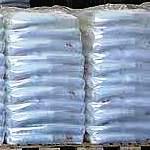
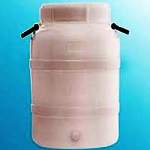
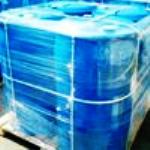
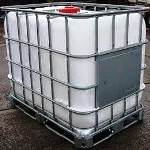
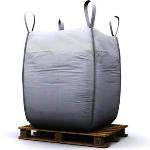
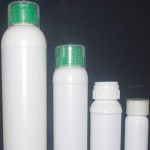
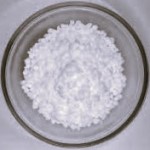
Cetyl Alcohol or 1-Hexadecanol or Palmityl Alcohol CAS Number 36653-82-4
For Properties Specifications Uses of Cetyl Alcohol or 1-Hexadecanol or Palmityl Alcohol Click Properties, Specifications, Uses, Price, Process of Cetyl Alcohol or 1-Hexadecanol or Palmityl Alcohol Manufacturer.
For For SDS MSDS Sheet of Cetyl Alcohol or 1-Hexadecanol or Palmityl Alcohol Click SDS Safety Data Sheet MSDS Sheet of Cetyl Alcohol or 1-Hexadecanol or Palmityl Alcohol Manufacturer.
The Properties, Specifications, Monograph and Uses of Cetyl Alcohol or 1-Hexadecanol or Palmityl Alcohol:
Cetyl Alcohol or 1-Hexadecanol or Palmityl Alcohol is used in the cosmetic industry as an opacifier in shampoos, or as an emollient, emulsifier, or thickening agent in the manufacture of skin creams and lotions. It can also be used as a non-ionic co-surfactant in emulsion applications. Cetyl alcohol is sometimes included in medications used for the treatment of eczema.
Cetyl Alcohol USP NF Grade Specifications:
C16H34O --- 242.44
1-Hexadecanol CAS 36653-82-4
UNII: 936JST6JCN
DEFINITION
Cetyl Alcohol contains NLT 90.0% and NMT 102.0% of cetyl alcohol (C16H34O), the remainder consisting chiefly of related alcohols. It is obtained from sources of vegetable, animal, or synthetic origin.
IDENTIFICATION
A. Chromatographic Identity: To pass the test.
Residue on Ignition: NMT 0.1%, determined on 2 g.
Limit of Related Fatty Alcohols: To pass the test.
Fats and Fixed Oils, Acid Value: ;NMT 2
Fats and Fixed Oils, Hydroxyl Value: 218–238
Fats and Fixed Oils, Iodine Value: NMT 5
Water Determination: NMT 0.5%
Cetyl Alcohol BP Ph Eur Grade Specifications:
Action and use: Excipient.
DEFINITION
Mixture of solid alcohols, mainly hexadecan-1-ol (C16H34O; Mr 242.4), of animal or vegetable origin.
Content: Minimum 95.0 per cent of C16H34O.
CHARACTERS
Appearance: White or almost white, unctuous mass, powder, flakes or granules.
Solubility: Practically insoluble in water, freely soluble or sparingly soluble in ethanol (96 per cent). When melted, it is miscible with vegetable and animal oils, with liquid paraffin and with melted wool fat.
IDENTIFICATION
Examine the chromatogram: To pass the test.
Appearance of solution: The solution is clear and not more intensely coloured than reference solution.
Melting point: 46C to 52C.
Acid value: Maximum 1.0.
Hydroxyl value: 218 to 238.
Iodine value: Maximum 2.0.
Saponification value: Maximum 2.0.
We also manufacture Cetyl Alcohol or 1-Hexadecanol of EP IP grade.
The MSDS-SDS Hazard Statement of Cetyl Alcohol or 1-Hexadecanol or Palmityl Alcohol:
Cetyl Alcohol or 1-Hexadecanol or Palmityl Alcohol SDS, Safety Data Sheet
MSDS Sheet, Material Safety Data Sheet 11-Feb-25
1. PRODUCT DESCRIPTION
Product Name & Other Names: Cetyl Alcohol or 1-Hexadecanol or Palmityl Alcohol.
CAS Number: 36653-82-4
EINECS EC Number: 253-149-0
Relevant uses and uses advised against (if any): Industrial Manufacturing.
Supplier: As per letterhead.
2. HAZARD IDENTIFICATION
GHS, Globally Harmonized System Classification in accordance with 29 CFR 1910
Hazard Class and Category Code(s), Regulation (EC) No 1272/2008 (CLP)
Not a hazardous substance or mixture according to Regulation (EC) No. 1272/2008.
This substance is not classified as dangerous according to Directive 67/548/EEC.
Labeling as per GHS & Regulation EC 1272/2008 (CLP)
GHS Label Elements None |
Signal Words: None
Precautionary statements:
P261: Avoid breathing dust/fume/gas/mist/vapors/spray.
P262: Do not get in eyes, on skin, or on clothing.
P281: Use personal protective equipment as required.
P302+P352: IF ON SKIN: Wash with plenty of soap and water.
P304+P340: IF INHALED: Remove victim to fresh air and keep at rest in a position comfortable for breathing.
P305+P351+P338: IF IN EYES: Rinse cautiously with water for several minutes. Remove contact lenses, if present and easy to do. Continue rinsing.
P337+313: If eye irritation persists get medical advice/attention.
3. COMPOSITION/INFORMATION ON INGREDIENTS
Product Name & Other Names: Cetyl Alcohol or 1-Hexadecanol or Palmityl Alcohol.
CAS Number: 36653-82-4
EINECS EC Number: 253-149-0
4. FIRST AID MEASURES
Always get medical attention after the first aid is over.
Emergency and First Aid Procedures:
Eyes - Flush with water for at least 15 minutes, raising and lowering eyelids occasionally. Get medical attention if irritation persists.
Skin - Thoroughly wash exposed area for at least 15 minutes. Remove contaminated clothing. Launder contaminated clothing before reuse. Get medical attention if irritation persists.
Ingestion - If it is swallowed, if conscious, give plenty of water. Immediately call a physician. Never give anything by mouth to an unconscious person.
Inhalation - Remove to fresh air. Give oxygen if breathing is difficult; give artificial respiration if breathing has stopped. Get medical attention.
5. FIREFIGHTING PROCEDURES
Extinguisher Media: Use media suitable to extinguish surrounding fire. Use water spray, alcohol-resistant foam, dry chemical, or carbon dioxide. Avoid solid water jet as it can scatter the fire.
Special hazards arising from the substance or mixture: Carbon oxides and fumes.
Extinguishing Media Not recommended: Avoid using solid water jet as it may scatter the fire.
Special Information: In the event of a fire, wear full protective clothing and NIOSH-approved self-contained breathing apparatus with full face piece operated in the pressure demand or other positive pressure mode.
6. SPILL OR LEAK PROCEDURES
Personal precautions, protective equipment, and emergency procedures: Avoid breathing dust/fumes/gas/mist/vapors/spray. Use individual protective equipment (waterproof boots, suitable protective clothing, safety glasses, etc.).
Environmental precautions: Do not let the product enter drains, soil, or water sources.
Methods and materials used for containment cleanup procedures and Storage: Contain spilled material. Cover with an inert, non-combustible absorbent material, (e.g., sand, earth, diatomaceous earth, vermiculite). Vacuum or sweep up and remove to an approved disposal container.
7. SPECIAL PRECAUTIONS
Precautions for safe handling: Apply according to good manufacturing and industrial hygiene practices. Ensure proper ventilation. Wash thoroughly after handling. Do not drink, eat, or smoke while handling. Avoid contact with skin, eyes, and clothing. Minimize dust generation. Avoid breathing dust/fumes/gas/mist/vapors/spray. Keep container tightly closed. Avoid ingestion and inhalation. Use individual protective equipment (waterproof boots, suitable protective clothing, safety glasses, etc.).
Conditions for safe storage, including any incompatibilities: Store in cool, dry, and ventilated area away from heat sources and protected from sunlight in tightly closed original container. Keep air contact to a minimum. Do not leave the material container open. Store protected from heat, sparks and ignition sources and incompatible materials. Avoid inhalation of dust/mist/vapor. Do not store with incompatible materials like oxidizing agents. Storage: Preserve in well-closed containers.
8. SPECIAL PROTECTION INFORMATION
Exposure Limits: This product does not contain any hazardous materials with occupational exposure limits established by the region-specific regulatory bodies.
Respiratory Protection (Specify Type): None needed under normal conditions of use with adequate ventilation. NIOSH approved equipment should be worn if exposure is high.
Ventilation System: A system of local and/or general exhaust is recommended to keep employee exposures as low as possible.
Personal Respirators (NIOSH Approved): For conditions of use where exposure to dust or mist is apparent and engineering controls are not feasible, a particulate respirator may be worn.
Skin Protection: Wear protective gloves and clean body-covering clothing.
Eye Protection: Use chemical safety goggles and/or full-face shield where dusting or splashing of solutions is possible. Maintain eye wash fountain and quick-drench facilities in work area.
Other Control Measures: Maintain good housekeeping in work area. Wash hands after handling.
9. PHYSICAL DATA
Appearance: White or almost white, unctuous mass, powder, flakes, or granules.
Odor: Very faint, waxy.
Odor threshold: No information found.
pH: No information found.
Relative density: about 0.81
Melting Point: 46C to 52C.
Boiling Point: 344C.
Flash point: No information found.
Auto-ignition temperature: No information found.
Decomposition temperature: No information found.
Upper/lower flammability or explosive limits: No information found.
Vapor pressure: No information found.
Vapor density: No information found.
Evaporation rate: No information found.
Flammability (solid, gas): No information found.
Partition coefficient: n-octanol/water: No information found.
Solubility(ies): Insoluble in water. Very soluble in ether, benzene, and chloroform.
Viscosity: No information found.
10. REACTIVITY DATA
Stability: It is stable under normal conditions of use and storage.
Conditions to Avoid: Heat, Dust generation.
Incompatibility (Materials to Avoid): Strong oxidizing agents.
Hazardous Decomposition Products: Carbon monoxide, carbon dioxide, fumes.
Hazardous Polymerization: Will not occur.
11. TOXICITY DATA
Acute toxicity:
LD50 Oral - Rat >2000 mg/kg.
Carcinogenicity: This product present at levels greater than or equal to 0.1% is identified as probable, possible, or confirmed human carcinogen by IARC, NTP, ACGIH & OSHA.
Mutagenic Effects: No information found.
Developmental Toxicity: No information found.
Reproductive Effects: No information found.
12. ECOLOGICAL DATA
Toxicity to fish: semi-static test LC50 - Oncorhynchus mykiss (rainbow trout) - > 0,4 mg/l - 96 h.
Bioaccumulative potential: Does not bioaccumulate.
Persistence and degradability: Degradable.
Mobility: No information found.
Results of PBT and vPvB assessment:No information found for assessment.
13. DISPOSAL INFORMATION
Waste Disposal Methods: Dispose in accordance with all applicable Federal, State and Local regulations.
14. TRANSPORT INFORMATION
DOT USA, TDG Canada & ADR/RID Europe: Not dangerous goods.
IMDG/IMO: Not dangerous goods.
IATA: Not dangerous goods.
15. REGULATORY INFORMATION
USA:
SARA 311/312 Hazards: See section 2.
California Prop. 65 Components: Not listed.
16. ADDITIONAL INFORMATION
DISCLAIMER: The information and recommendations set forth herein are presented in good faith and believed correct as of the date hereof. It is compiled from various sources, and it is not necessarily all inclusive nor fully adequate in every circumstance. In addition, these suggestions should not be confused with nor followed in violation of applicable laws, regulations, rules, or insurance requirements applicable. This MSDS sheet is intended only as a guide to the appropriate precautionary handling of the material by a professionally trained person using this product. Individuals receiving the information must exercise their independent judgment in determining its appropriateness for a particular purpose.

Cetyl Alcohol or 1-Hexadecanol or Palmityl Alcohol Manufacturers, Suppliers, Exporters, Wholesalers:
King of Chemicals manufacturers

Plot No. 2900/46&47 + 2900/163to167, GIDC, Ankleshwar, Dist. Bharuch, India
India, USA, UAE
TEL: (Office) 91-22-23774610, 91-22-23723564
e-mail: info@kingofchemicals.com
Copyright and Usual Disclaimer is Applicable --- March 31, 2025
If I give you “My Word” Nobody can undo it.
If I sign an “Agreement” my Lawyer will undo it
Our products are for industrial and laboratory use only. The user must test the material before use. We are not dispensing chemists or druggist and do not offer over the counter type (OTC) products for medical use by individuals.
We and our associates manufacture pure chemicals surpassing Monograph Specifications of Analytical Reagent Standards, British & European Pharmacopoeia BP Ph Eur EP Standard, US Pharmacopoeia USP NF Standard, Indian Pharmacopoeia IP Standard, Japan Pharmacopoeia JP Standard, FCC Food Grade Standard. |
|